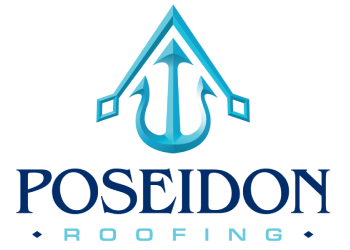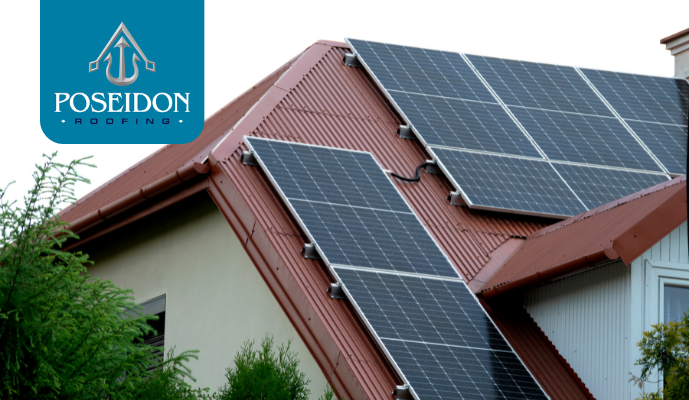Sustainable roofing has become an essential aspect of modern construction, offering homeowners and businesses alike a way to reduce their environmental impact while saving money in the long term. From energy savings to waste reduction, sustainable roofing is not just a trend but a vital step toward eco-conscious building practices. In this blog post, we will explore the financial and environmental benefits of sustainable roofing, different types of roofing materials, and how they contribute to energy efficiency and a healthier planet.
The Basics of Sustainable Roofing
Sustainable roofing is all about using materials and techniques that have a minimal impact on the environment. These materials, such as eco-friendly roofing options and energy-efficient systems, are designed to last longer, reduce the need for frequent repairs, and provide better energy savings. Additionally, sustainable roofs often utilize materials that are recyclable or made from recycled content, helping to reduce landfill waste.
The term “sustainable roofing” refers to a variety of practices and products that promote environmental responsibility. These include green roofs, solar roofing, cool roofs, and roofing materials made from recycled or reclaimed materials. Sustainable roofing doesn’t just focus on using eco-friendly materials; it also considers factors like energy efficiency, durability, and reducing the urban heat island effect.
How Sustainable Roofing Helps Save Money
While the initial cost of installing sustainable roofing might seem higher than traditional options, the long-term savings are substantial. Here are a few ways sustainable roofing can save you money:
Lower Energy Bills
One of the most significant ways sustainable roofing saves you money is by improving the energy efficiency of your home or business. For example, cool roofs, which reflect more sunlight and absorb less heat than traditional roofs, help maintain lower indoor temperatures. This reduces the need for air conditioning in the summer, leading to lower energy consumption and, ultimately, lower electricity bills.
Eco-friendly roofing materials like metal roofs, slate tiles, or clay tiles can also help regulate indoor temperatures, keeping buildings warmer in the winter and cooler in the summer. This results in less reliance on heating and cooling systems, saving energy and reducing utility costs over time.
Longer Roof Lifespan
Sustainable roofing products are often made from more durable materials that last longer than traditional roofing materials like asphalt shingles. For example, metal roofs and slate tiles have a much longer lifespan, reducing the need for frequent roof replacements and repairs. Over time, this can save homeowners and businesses significant money by eliminating the cost of re-roofing.
Reduced Maintenance Costs
Eco-friendly materials like clay roofs and recycled shingles are designed to be more durable and resistant to the elements. This means they require less frequent maintenance compared to traditional roofing options. By reducing the need for repairs and replacements, sustainable roofs can save you both time and money in the long run.
Tax Incentives and Rebates
Many regions offer tax incentives or rebates for installing energy-efficient roofs or integrating solar panels into your roof construction. These incentives can offset the initial installation costs of sustainable roofing, making it more affordable for homeowners and businesses alike.
Environmental Benefits of Sustainable Roofing
In addition to saving money, sustainable roofing offers numerous environmental benefits that contribute to a healthier planet. Here are some key environmental advantages:
Reducing Carbon Footprint
Sustainable roofing materials, such as solar roofing and green roofs, help reduce a building’s overall carbon footprint. Solar panels, for example, allow buildings to generate their own renewable energy, reducing reliance on fossil fuels and decreasing greenhouse gas emissions. By choosing eco-friendly roofing options, you can significantly contribute to environmental conservation and sustainability.
Waste Reduction
Using recycled materials and sustainable roofing products reduces the amount of construction waste that ends up in landfills. Many sustainable roofing materials, such as recycled shingles or rubber roofing, are made from post-consumer products, helping to reduce landfill waste and lower environmental impact.
In addition, green roofs promote biodiversity and provide valuable green space in urban environments. These roofs help absorb rainwater, reduce stormwater runoff, and improve air quality by filtering pollutants from the atmosphere.
Combating the Urban Heat Island Effect
Urban areas are often much hotter than surrounding rural areas due to the concentration of buildings and infrastructure that absorb and retain heat. This is known as the urban heat island effect. Cool roofs, which are designed to reflect sunlight and absorb less heat, help mitigate this phenomenon. By installing cool roofs, you can reduce the temperature in urban areas, lower energy consumption for air conditioning, and create a more comfortable living environment.
Enhanced Water Management
Green roofs, which are covered with vegetation, play an essential role in water management. They absorb rainwater, preventing it from overwhelming drainage systems and reducing the risk of flooding. Additionally, green roofs improve water quality by filtering pollutants from rainwater, making them an eco-friendly solution for both water conservation and stormwater management.
Popular Sustainable Roofing Materials
Metal RoofsSlate TilesClay TilesClay tiles are a popular choice for eco-friendly roofing due to their natural composition and energy-efficient properties. These tiles are highly durable, resistant to the elements, and have excellent insulation properties. Clay roofs can help keep your home cooler in the summer and warmer in the winter, contributing to overall energy efficiency.
Green Roofs
Green roofs are becoming increasingly popular in urban areas. These roofs are covered with plants and vegetation, offering numerous environmental benefits, including improved air quality, reduced stormwater runoff, and enhanced biodiversity. Green roofs can also help regulate building temperatures, reducing the need for artificial heating and cooling.
Recycled Materials
Recycled materials, such as recycled shingles, rubber roofing, and recycled metal sheets, are a great way to create a sustainable roof. These materials are often made from post-consumer products, such as old roofing materials or plastic waste, helping to reduce landfill waste and lower environmental impact.
Solar Roofing
Solar roofing integrates solar panels directly into the roof structure, allowing buildings to generate renewable energy. Solar roofing is an excellent way to reduce reliance on non-renewable energy sources and lower utility costs. As an eco-friendly option, solar roofing helps decrease a building’s carbon footprint while providing energy savings over time.
How Poseidon Roofing Can Help You Build a Sustainable Roof
When you’re ready to make the switch to sustainable roofing, it’s essential to work with a reliable roofing company that understands the importance of eco-friendly options. Poseidon Roofing offers a variety of roofing services that include the installation of sustainable roofing materials, such as metal roofs, green roofs, and solar roofing. Our expert team ensures that your roofing system is not only energy-efficient but also durable and eco-friendly, saving you money while helping protect the environment.
Whether you’re interested in reducing your carbon footprint or improving your home’s energy efficiency, Poseidon Roofing is here to provide the best sustainable roofing solutions for your needs. Our commitment to using high-quality, eco-friendly roofing materials ensures that you can enjoy both long-term cost savings and environmental benefits.

